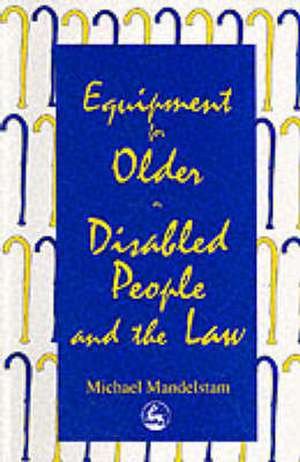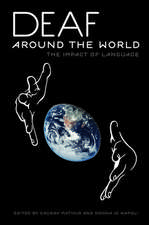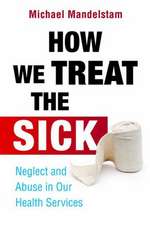Equipment for Older or Disabled People and the Law
Autor Michael Mandelstamen Limba Engleză Paperback – 30 iun 1996
Preț: 282.17 lei
Preț vechi: 354.44 lei
-20% Nou
Puncte Express: 423
Preț estimativ în valută:
54.00€ • 56.17$ • 44.58£
54.00€ • 56.17$ • 44.58£
Carte disponibilă
Livrare economică 24 martie-07 aprilie
Preluare comenzi: 021 569.72.76
Specificații
ISBN-13: 9781853023521
ISBN-10: 1853023523
Pagini: 550
Dimensiuni: 159 x 233 x 27 mm
Greutate: 0.93 kg
Editura: Jessica Kingsley Publishers Ltd
Locul publicării:United Kingdom
ISBN-10: 1853023523
Pagini: 550
Dimensiuni: 159 x 233 x 27 mm
Greutate: 0.93 kg
Editura: Jessica Kingsley Publishers Ltd
Locul publicării:United Kingdom
Notă biografică
Textul de pe ultima copertă
This comprehensive book explains the provision, both law and practice, of equipment and home adaptations to assist older or disabled people in daily living. Characterised by ill-defined statutory reponsibilities and terminology, and an under-developed consumer retail market, the system of provision has long been recognised as chaotic and confusing for professionals and public alike. This is despite the fact that equipment and adaptations are meant to be a central plank of community care. Necessarily wide-ranging but maintaining its focus, the book aims critically to describe the system and thereby promote better practice. By exploring boundaries and breaking points, it will assist people to understand the law when things go wrong - from negligence to judicial review, and from contract to product safety legislation. The range of items covered is great, from alarms to artificial limbs, baths to bedrooms, chopping boards to crutches, electronic toothbrushes to environmental controls, hearing aids to hoists, incontinence pads to ironing equipment, rails to ramps, speech aids to stairlifts, and walking frames to wheelchairs.















